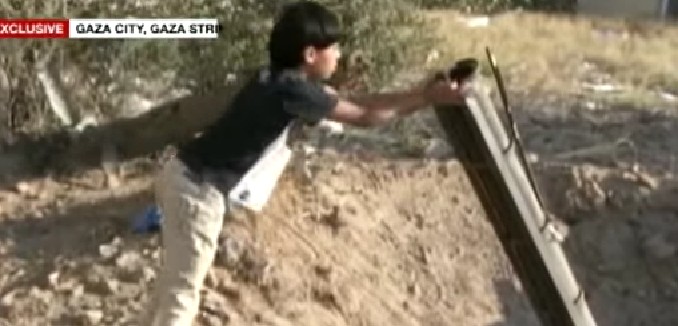In an account published yesterday in The Atlantic, former reporter for the Associated Press (AP) Matti Friedman explains how bias develops and influences international reporting from Israel. Friedman identifies both news agencies and NGO’s as effectively complicit in advancing the Hamas media strategy in particular and anti-Israel narrative bias more broadly. He notes:
This confusion is very much present in Israel and the Palestinian territories, where foreign activists are a notable feature of the landscape, and where international NGOs and numerous arms of the United Nations are among the most powerful players, wielding billions of dollars and employing many thousands of foreign and local employees. Their SUVs dominate sections of East Jerusalem and their expense accounts keep Ramallah afloat. They provide reporters with social circles, romantic partners, and alternative employment—a fact that is more important to reporters now than it has ever been, given the disintegration of many newspapers and the shoestring nature of their Internet successors.
In my time in the press corps, I learned that our relationship with these groups was not journalistic. My colleagues and I did not, that is, seek to analyze or criticize them. For many foreign journalists, these were not targets but sources and friends—fellow members, in a sense, of an informal alliance. This alliance consists of activists and international staffers from the UN and the NGOs; the Western diplomatic corps, particularly in East Jerusalem; and foreign reporters. (There is also a local component, consisting of a small number of Israeli human-rights activists who are themselves largely funded by European governments, and Palestinian staffers from the Palestinian Authority, the NGOs, and the UN.) Mingling occurs at places like the lovely Oriental courtyard of the American Colony hotel in East Jerusalem, or at parties held at the British Consulate’s rooftop pool. The dominant characteristic of nearly all of these people is their transience. They arrive from somewhere, spend a while living in a peculiar subculture of expatriates, and then move on.
Friedman reveals that “a distaste for Israel has come to be something between an acceptable prejudice and a prerequisite for entry” into this society.
He further argues that despite their influence on the news, NGO’s are subject to little scrutiny; in fact, Friedman reports that NGO Monitor, a group which investigates the funding and activities of NGO’s, was boycotted by AP.
Friedman writes that journalists have become a tool for Hamas to spread its propaganda, as “Hamas understood that journalists would not only accept as fact the Hamas-reported civilian death toll—relayed through the UN or through something called the “Gaza Health Ministry,” an office controlled by Hamas—but would make those numbers the center of coverage.”
In an earlier article written for Tablet Magazine on the heels of Operation Protective Edge, Friedman wrote:
The lasting importance of this summer’s war, I believe, doesn’t lie in the war itself. It lies instead in the way the war has been described and responded to abroad, and the way this has laid bare the resurgence of an old, twisted pattern of thought and its migration from the margins to the mainstream of Western discourse—namely, a hostile obsession with Jews.
Like his earlier article in Tablet, Friedman’s latest is generating a lot of discussion.
Former AP correspondent Mark Lavie, who was quoted by Friedman in yesterday’s article, previously wrote Why Everything Reported from Gaza is Crazy Twisted, published in the August 2014 issue of The Tower Magazine. Lavie identified intimidation of reporters as the primary reason news from Gaza is skewed:
Why aren’t you hearing that from Gaza? Often, it’s because reporters are afraid to tell you.
True, in some cases, it’s anti-Israel bias. In others, it’s bad journalism—covering the story you can easily see above ground, like destruction, misery, death and funerals, instead of digging for the real story: Why this is happening and how the powerful are operating behind the scenes or underground—again, literally. It’s the scourge of 21st century “journalism,” with its instant deadlines, the demands to tweet and blog constantly, the need to get something out there that’s more spectacular than the competition, and check the facts later, if at all. Add to that the cruel cutbacks by news organizations around the world. It all means that fewer and fewer reporters have to file more and more stories, and file partial reports while they’re working. It’s impossible. I allow myself the quotation marks around “journalism” because I’ve been a journalist for half a century (I started young), covering the region since 1972, and I fear my profession is not what it used to be, and not for the better.
So those elements are parts of the reason why you’re not getting the whole story from Gaza. But the most important element is intimidation of reporters on the ground.
[Photo: FRANCE 24 English / YouTube ]




